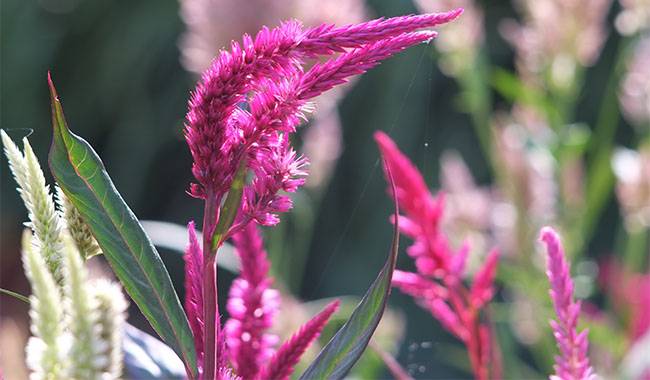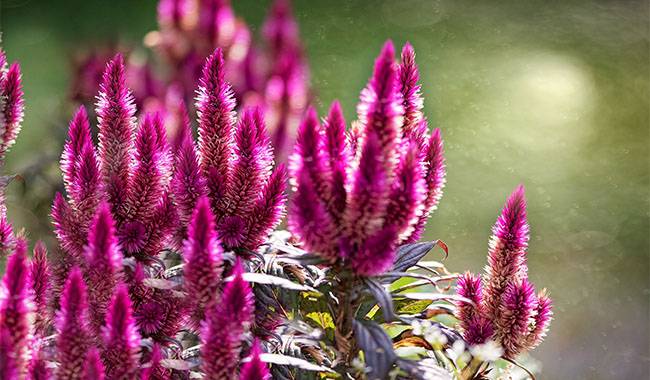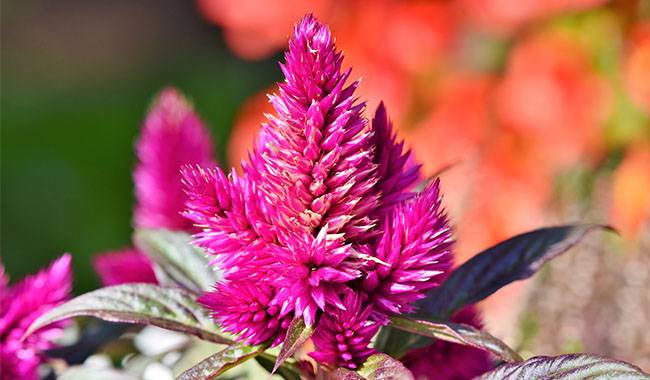
WHAT IS CELOSIA?
Celosia Plant Characteristics
Celosia is an annual sunflower that has been around for generations – and it is still very popular. One of the reasons for the popularity of this plant is that it is very easy to grow.
You can grow celosia in any sunny spot – including container gardens, garden beds and borders, and landscaping.
Having a bunch of different varieties of crocus also gives you a lot of options for designing your garden. The peak type has interesting, brain-like flowers that have given rise to one of the plant’s other nicknames: the rooster comb (because the flowers look like a comb on a chicken’s head).
The plume type has feathery flowers that look like flames or marshmallows and are especially interesting in container gardens for added vertical appeal and texture. And the spike type has interesting, wheat-like flowers. Most celandine varieties are available in shades of red, pink, orange, and yellow.
While this sun-loving annual flower mixes beautifully with other flowers, they also look great when planted in large numbers. This easy-care flower attracts butterflies and lasts a long time when cut into bouquets.
Latin name: Celosia
Subclass: Primitive perianth subclass Archichlamydeae
Family: Amaranthaceae
Distribution area: Subtropical and temperate regions of Africa, America, and Asia
Morphological characteristics
Annual or perennial herb, subshrub, or shrub. Leaves alternate, ovate to striate, entire or nearly so, petiolate.
Flowers bisexual, in terminal or axillary, crowded or interrupted spikes, simple or arranged in panicles, the involucral pedicels sometimes compressed.
Each flower with 1 bract and 2 bracteoles, colored, scarious, persistent; tepals 5, colored, scarious, shiny, glabrous, spreading erect, persistent; stamens 5, filaments subulate or filiform, free distally, united basally into a cup; staminodes absent.
Staminodes absent; ovary 1-located, with 2 to many ovules, style 1, persistent, stigma capitate, slightly 2-3-lobed, reflexed.
Utricle ovoid or globose, thinly walled, capped by dehiscence. Seeds convex mirror-like reniform, black, shiny.
Distribution
About 60 species, distributed in subtropical and temperate regions of Africa, America, and Asia.
Habitat
Wild or cultivated, growing on plains, field margins, hills, and mountain slopes up to 1100 m above sea level.
Subordinate classification
Celosia argentea L.
Celosia cristata L.
Taiwan Celosia Celosia taitoensis Hay.
Main values
The seeds of some plants in this genus are used for medicinal purposes and have the effect of clearing heat and brightening the eyes; the inflorescence persists for a long time and can be used for ornamental purposes; after the seeds are fried, they can be processed into various kinds of enamel; after the young stems and leaves are soaked to remove the bitterness, they can be eaten as wild vegetables; the whole plant can be used as fodder.





